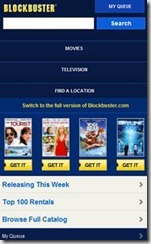Mobile consumption is steadily on the rise and according to Quantcast it still only accounts for less than 5% of all global web consumption, with slightly less in the U.S. With that being said, community designers seem to be making one of two mistakes when thinking through their approach and rationale for developing a new social tool or online community.
The first mistake is to completely ignore mobile altogether. Granted, the overall consumption of mobile is not a staggering amount, but it is on the rise (keep in mind these numbers do not take into account app usage). The second mistake is getting app happy. Not every website or brand needs to have an app, people!
Before your brand ventures into the “mobile design phase,” be sure to ask yourself two questions:
- Should I ignore 5 to 10 percent of my customers at any given time?
- Can I tailor a very specific experience through a mobile app that is different from the mobile version of my website?
The answer to question one should always be, “no!” Let’s look at a real life example. Blockbuster has recently closed all of its brick and mortar locations and opted to go head-to-head with Netflix and only offer a service that provides online/home delivery rentals. I have no affiliation with Blockbuster, but for the sake of this blog post, let’s pretend that I was an integral part.
- Should Blockbuster ignore 5 to 10 percent of their customers given they aren’t the customers using mobile devices? Hells no! In fact, Blockbuster needs to be sure that each and every customer can rent a movie anytime they choose.
- Can Blockbuster tailor a very specific experience through a mobile app? Hells yeah! Oh, wait. Blockbuster can’t really do that, can they? They have already fulfilled a promise to develop a mobile website that fulfills the brand’s promise.
Blockbuster then created http://blockbuster.com/mobile. Here anyone with an internet connected mobile device can have a very straightforward and most importantly, an easy-to-rent movie experience without having to first download an app. Notice how it almost looks like an app?

The big takeaway is that Blockbuster decided not to release an app for the sake of releasing an app. They waited until they had a very specific reason to do so—to stream movies directly to selected Verizon Wireless devices. Obviously Blockbuster needs to offer the ability to rent from their mobile device to everyone that is a paying customer, but the thought process behind developing an app vs. a mobile website remains sound.
Blockbuster definitely followed ComBlu’s two rules on engaging mobile users:
- Create a very solid mobile website experience that fulfills your brand’s promise. Remember, every touchpoint you have with a customer is another chance to build loyalty.
- Only develop an app when there is a targeted need for it. An app is not a replacement for a mobile website and you will find that it is extremely more time consuming and expensive to develop an app than a really great mobile site.

